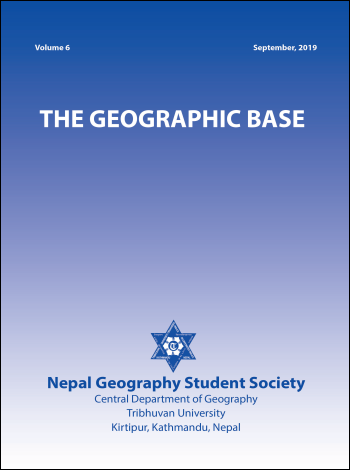Soil Fertility Assessment of Sainamaina Municipality, Rupandehi, Nepal
DOI:
https://doi.org/10.3126/tgb.v7i0.34268Keywords:
Soil fertility, fertility assessment, nutrient index, organic matteAbstract
Soil fertility assessment is a very fundamental task for farmers and agricultural planners to adopt appropriate fertility management practices, to recommend applying lacking fertilizers, to make fertility-based agricultural plans,s and to produce a large number of crops in their land. This study assesses the soil fertility status of Sainamaina Municipality, ward no. 5-9, Rupandehi district based on soil sample data collected from the field. Soil test based fertility assessment, calculation of overall fertility of area using fertility index, and preparation of soil fertility map is carried out. As soil fertility, the status of total nitrogen (TN), phosphorus (P2 O5), potassium (K), organic matter (OM), and soil pH are measured. As a result, the status of TN, (K2 O), and OM is found low, the status of (P2 O5 ) is found high and soil pH is found in range of very strongly acidic to slightly alkaline.
Downloads
Downloads
Published
How to Cite
Issue
Section
License
© Nepal Geography Student Society




